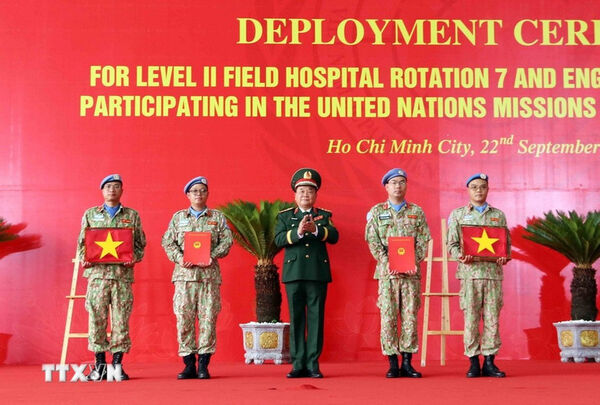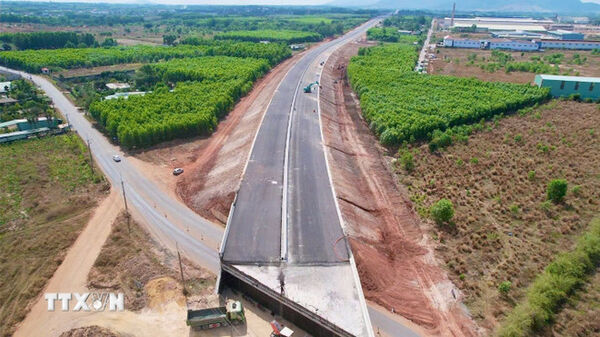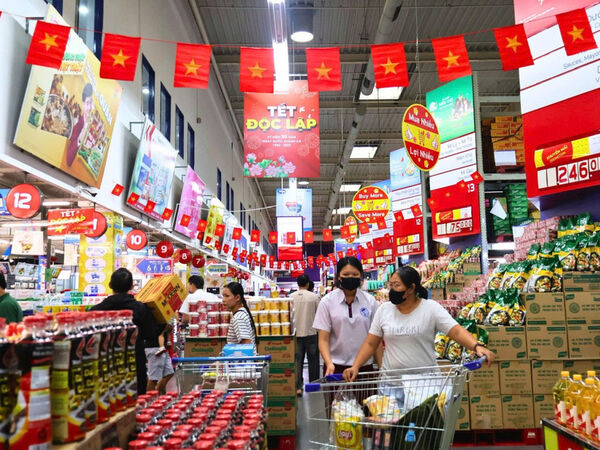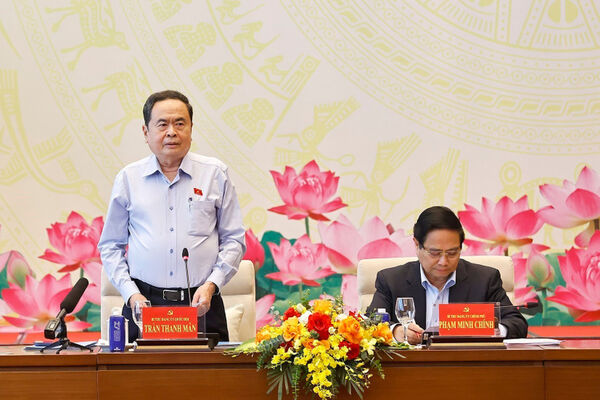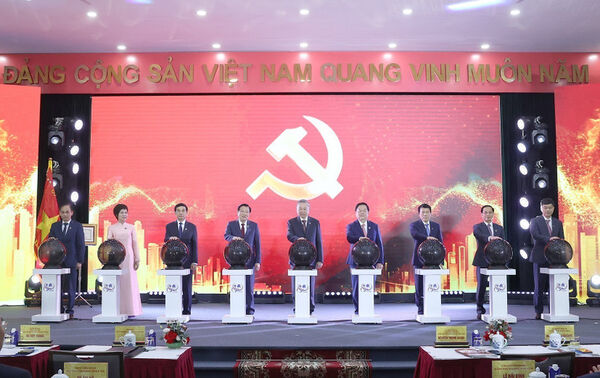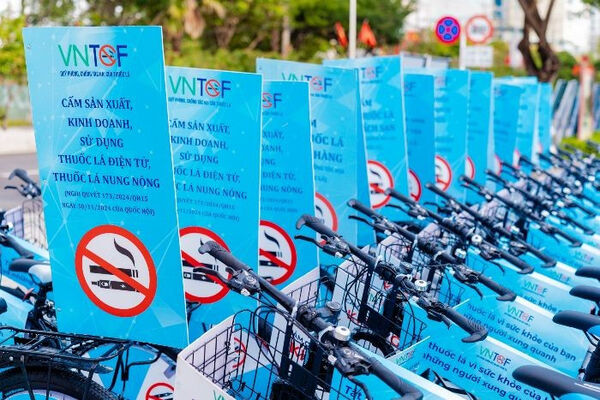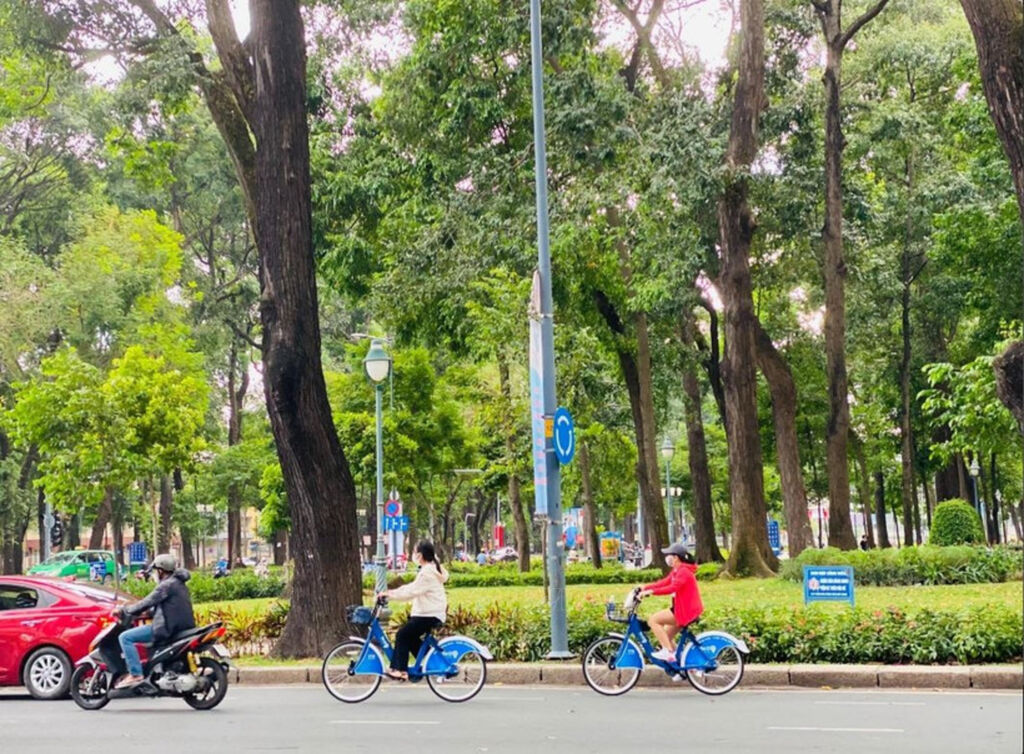 |
| Without designated bike lanes, cyclists have to share the road with cars and motorbikes. (Photo: thanhnien.vn) |
HCM City (VNA) – Ho Chi Minh City is preparing to pilot its first dedicated bicycle lane with the aim of promoting green transportation, addressing traffic congestion, and reducing environmental pollution. However, bringing the city back to the golden era of bicycles in the 1970s–1990s remains a major challenge.
The Urban Traffic Management Centre under the municipal Department of Construction has announced that a project will be implemented to renovate and organise a priority lane for bicycles on Mai Chi Tho street, from Nguyen Co Thach street to D1 street.
The project has a total investment of 12.7 billion VND (480,800 USD) and will be carried out from October 1 to December 31. The 5.7 km section has a design speed of up to 20 km/h.
By 2026, the centre plans to add two more sections with bicycle-priority lanes. The first will run from Nguyen Co Thach street to the Saigon Riverside Park, with a length of 1.4 km each way. The second section will run from the D1 – Mai Chi Tho intersection to Vo Nguyen Giap street, connecting with the An Phu metro station, stretching 2.5 km each way.
The bicycle use is on the rise among residents in urban areas and apartment complexes. Therefore, designing dedicated bicycle lanes will encourage people to use this vehicle for commuting, exercising, and sightseeing, thereby improving public health, contributing to a better urban environment, and promoting tourism through bicycle tours.
Creating favourable conditions will motivate residents to use bicycles instead of personal motor vehicles, helping to change travel habits in the city, according to the centre.
Previously, in a project on vehicle emissions control in Ho Chi Minh City, the consulting unit also proposed authorities consider arranging bicycle lanes on routes with wide-enough sidewalks (over 3 metres) to dedicate them to cyclists. At the same time, it suggested expanding bicycle services to areas such as the former Thu Duc University Village, urban zones in the former District 2, and along stations on urban railway lines.
Recalling the period from 1975 to 1990, when bicycles were the main mode of transport for local residents, architect and urban planning expert Ngo Viet Nam Son said that the city had missed the opportunity to leverage bicycles as a direct step toward developing public transportation. Instead, motorcycles gained ground and expanded too rapidly, leading to today’s severe traffic congestion. Therefore, he expressed his support for all plans and policies that promote the development of bicycles in the city.
The architect also proposed that if the city wants to encourage residents to cycle and promote green transportation, it must plan bicycle rental points in alignment with urban planning for bicycles.
In the immediate term, authorities should identify inner-city routes that meet the necessary conditions; where sidewalks are wide enough, residents can be allowed to cycle on them. Riverside and canal-side routes are highly feasible as protection corridors there are generally 5–10 metres wide, with some stretches reaching 20–30 metres./.

